Understanding and Preventing Dwarf Gourami Diseases: A Comprehensive Guide
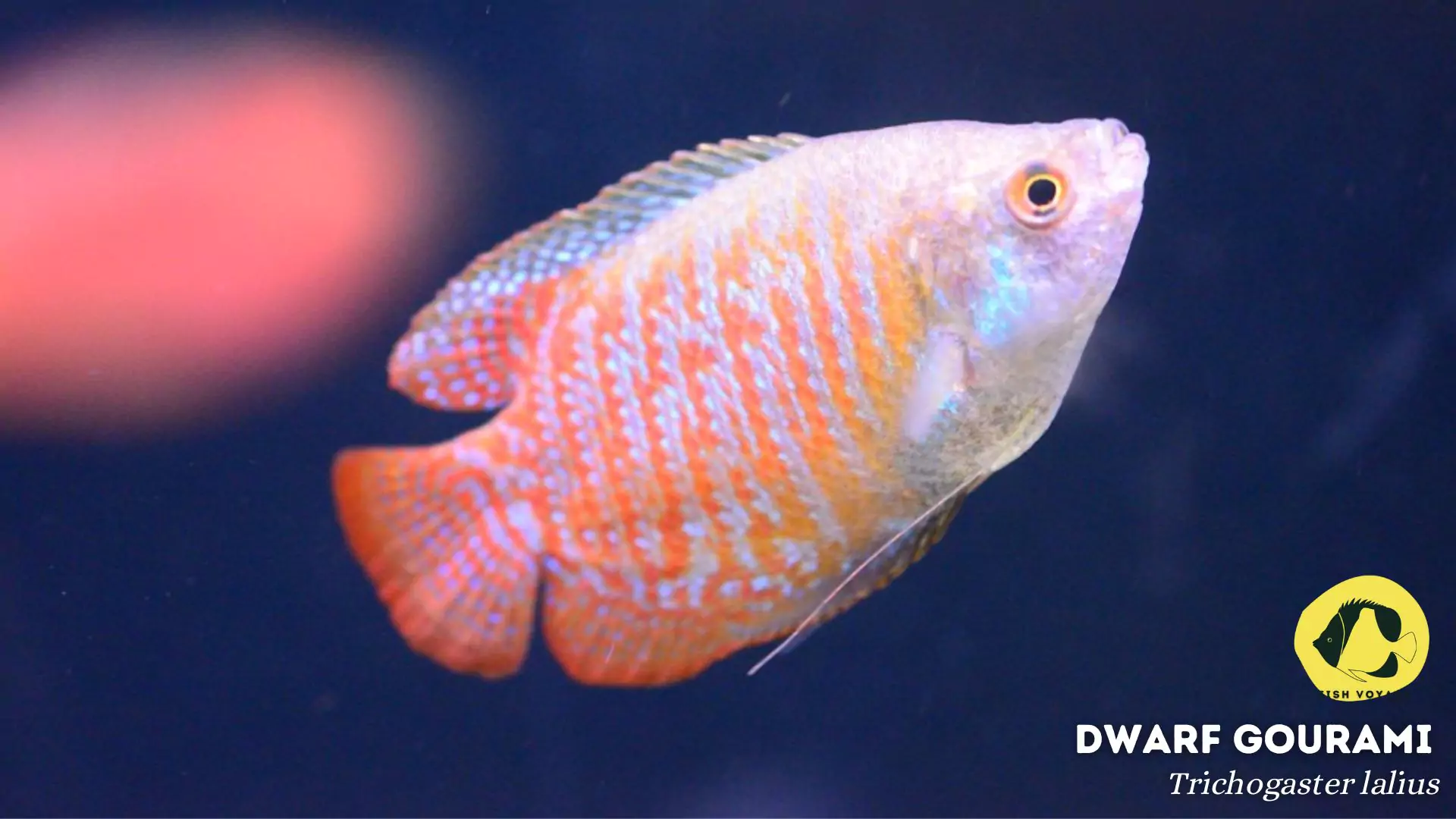
Introduction
Dwarf Gouramis, cherished for their vibrant colors and charming personalities, have secured a special place in the hearts of aquarium enthusiasts worldwide. These small, labyrinth fish, native to South and Southeast Asia, captivate hobbyists with their striking hues and distinctive patterns, making them a sought-after addition to freshwater aquariums. However, as guardians of these aquatic companions, it is crucial to delve beyond their aesthetic appeal and recognize the responsibility that comes with their care.
Understanding and preventing diseases in Dwarf Gouramis is paramount for the well-being of these captivating creatures. In the realm of aquarium keeping, a proactive approach to health management is not merely a choice but a moral obligation. As we explore the nuances of common ailments that afflict Dwarf Gouramis, we embark on a journey to ensure the longevity and vitality of these beloved aquatic companions. Join us in this comprehensive guide as we navigate the intricate waters of Dwarf Gourami care, shedding light on the practices that safeguard their health and enhance the joy they bring to our aquatic sanctuaries.
Common Dwarf Gourami Diseases
Dwarf Gourami Iridovirus (DGIV)
Definition and Explanation of DGIV
Dwarf Gourami Iridovirus (DGIV) is a viral infection that specifically targets Dwarf Gouramis, causing significant health concerns in aquariums. This insidious pathogen belongs to the Iridoviridae family, impacting the fish’s immune system and often leading to severe consequences if not addressed promptly.
Symptoms to Look Out For
Identifying DGIV early on is crucial for effective intervention. Watch for telltale signs such as color changes, lethargy, abnormal swimming patterns, and frayed fins. Moreover, affected fish may exhibit a decline in appetite and an overall downturn in activity levels.
How It Spreads and Preventive Measures
DGIV spreads primarily through direct contact between infected and healthy fish. To mitigate its transmission, maintain strict quarantine protocols for new additions, and conduct regular health assessments. Additionally, fostering optimal water quality and ensuring a stress-free environment are vital preventive measures against this pervasive virus.
Dwarf Gourami Disease (DG Disease)
Causes and Factors Contributing to DG Disease
Dwarf Gourami Disease (DG Disease) is multifactorial, often arising from poor water conditions, overcrowding, or stress. Stressors such as sudden changes in temperature or inadequate nutrition can compromise the immune system, paving the way for this ailment.
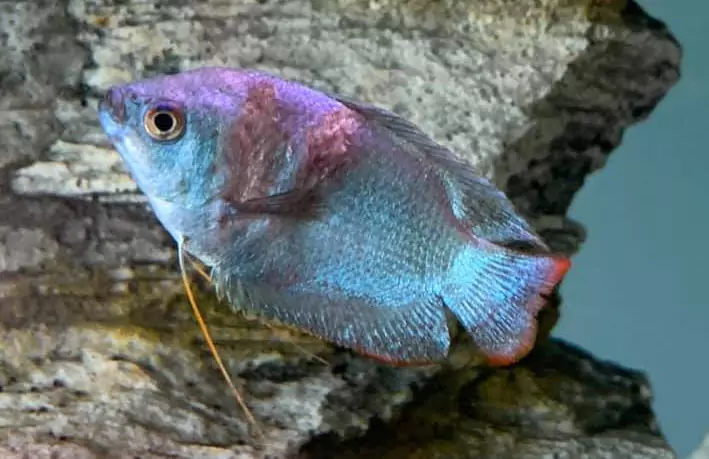
Recognizing Symptoms Early On
Early detection of DG Disease involves vigilant observation. Look for signs like skin ulcerations, abnormal growths, and changes in behavior. Additionally, if fish show signs of rubbing against objects or clamped fins, it may indicate the onset of DG Disease.
Treatment Options and Considerations
Upon confirming DG Disease, swift action is imperative. Isolate affected fish to prevent further contagion, and initiate treatment with a broad-spectrum antimicrobial agent. Concurrently, address underlying stress factors by optimizing tank conditions, ensuring a balanced diet, and minimizing disruptions in the aquarium environment.
Ichthyophthirius multifiliis (Ich)
Introduction to Ich and Its Impact on Dwarf Gouramis
Ich, caused by the protozoan parasite Ichthyophthirius multifiliis, poses a significant threat to Dwarf Gouramis. This external parasite manifests as white cysts on the fish’s skin, gills, and fins, leading to irritation, respiratory distress, and, if left untreated, fatalities.
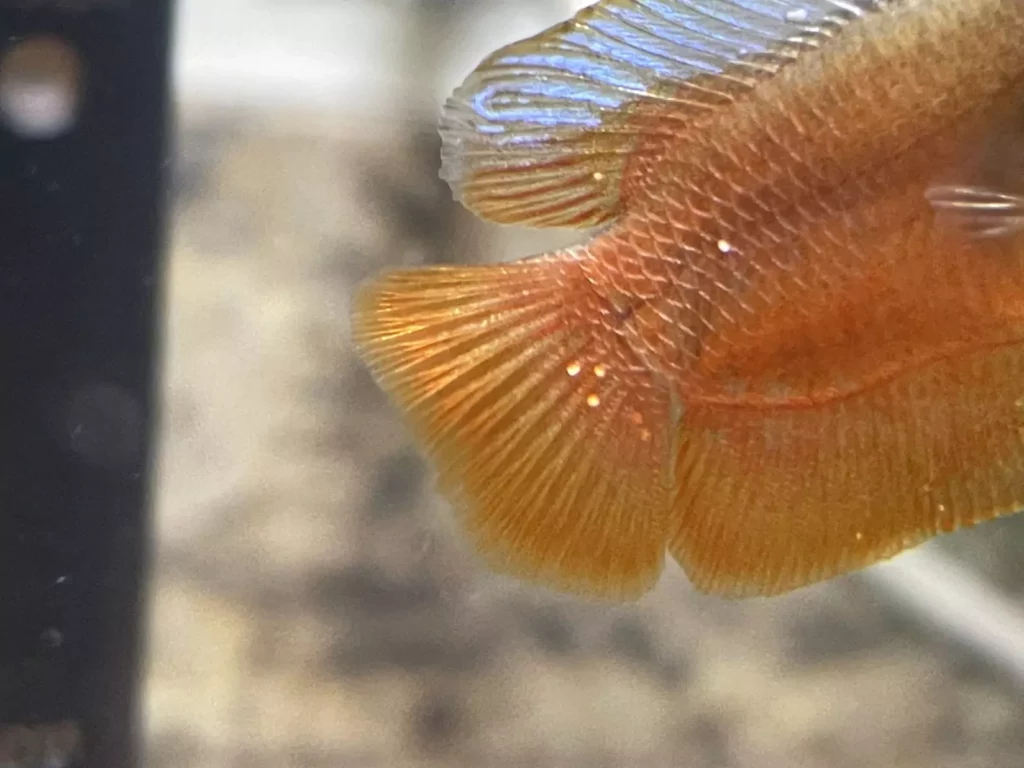
Identifying Ich in Dwarf Gouramis
Recognizing Ich involves observing the emergence of white spots resembling grains of salt or sand on the fish’s body. Additionally, affected fish may display rapid gill movement, increased mucus production, and a reluctance to feed.
Treatment Strategies and Preventive Measures
Timely intervention is vital when combatting Ich. Increase the water temperature gradually to accelerate the life cycle of the parasite, making it more susceptible to treatment. Medicate with anti-parasitic agents, ensuring a full course of treatment. Implement rigorous quarantine practices for new fish to prevent Ich introduction, and maintain pristine water conditions to fortify the fish’s natural defenses against this common aquatic menace.
Best Practices for Dwarf Gourami Health
Proper Tank Conditions
Ideal Water Parameters
Maintaining ideal water conditions is paramount for Dwarf Gourami health. Aim for a pH level between 6.5 and 7.5, a water temperature of 77-82°F (25-28°C), and hardness between 4-15 dGH. Regularly test and adjust these parameters to mimic their natural habitat, promoting overall well-being.
Importance of Regular Water Changes
Regular water changes, typically 20-25% every two weeks, are fundamental to a thriving aquarium. This practice removes accumulated toxins, replenishes essential minerals, and ensures a stable environment. Consistent water quality not only aids in disease prevention but also enhances the vibrant colors and vitality of Dwarf Gouramis.
Suitable Tank Mates and Their Impact on Health
Thoughtful selection of tank mates is crucial. Peaceful community fish, such as tetras and rasboras, are suitable companions. Avoid aggressive or territorial species that may stress Dwarf Gouramis. Harmonious tank dynamics contribute significantly to reducing stress-related illnesses and fostering a tranquil aquatic environment.
Balanced Diet and Feeding Habits
Nutritional Needs of Dwarf Gouramis
Addressing the specific nutritional requirements of Dwarf Gouramis is essential. A well-balanced diet should include high-quality flake or pellet food, supplemented with live or frozen treats like brine shrimp or bloodworms. Ensure the diet is rich in protein, vitamins, and minerals to support their vibrant coloration and overall health.
Recommended Feeding Schedules
Establish a consistent feeding schedule, typically twice a day, providing an amount of food that can be consumed within a few minutes. This prevents overfeeding and maintains water quality. Offering a variety of foods mimics their natural diet, promoting optimal health and reducing the risk of nutritional deficiencies.
Avoiding Overfeeding and Its Consequences
Overfeeding is a common pitfall in aquarium care. Excess uneaten food can degrade water quality, leading to stress and increased susceptibility to diseases. Monitor feeding habits closely and adjust quantities accordingly. Remember, a well-fed fish is a healthy fish, and moderation is key to preventing potential health issues.
Quarantine Procedures
Significance of Quarantine for New Fish
Quarantine serves as a crucial preventative measure for introducing new fish. Newcomers may carry pathogens that, if introduced directly into the main tank, can lead to widespread illness. Isolate new additions in a separate quarantine tank for a minimum of two weeks to observe and address any potential health issues before integration.
How to Set Up an Effective Quarantine Tank
A dedicated quarantine tank should replicate the main tank’s conditions. Install a heater, filter, and sufficient hiding places. Regularly monitor water parameters and conduct visual health assessments. Treatments, if needed, can be administered in isolation without affecting the main aquarium’s ecosystem.
Monitoring and Transitioning New Additions
During quarantine, observe new fish for signs of disease, abnormal behavior, or stress. Once the quarantine period concludes successfully, gradually acclimate them to the main tank. This gradual transition minimizes stress and ensures a smoother integration into the established community.
By integrating these best practices, aquarists can create a conducive environment that not only enhances the well-being of Dwarf Gouramis but also minimizes the risk of diseases, fostering a flourishing aquatic ecosystem.
Recognizing Signs of Illness
Dwarf Gouramis, with their vibrant hues and lively demeanor, are captivating additions to aquariums. However, despite their hardy nature, these charming fish are not immune to health challenges. Recognizing early signs of distress or illness is pivotal for conscientious aquarium stewardship. Here’s a comprehensive guide to help aquarists identify and address potential health issues promptly.
Changes in Coloration
A sudden shift in coloration, such as fading, darkening, or the appearance of abnormal patches, can indicate stress or illness. Keep a keen eye on their natural vibrancy as any deviations may signify underlying health concerns.
Unusual Swimming Patterns
Abnormal swimming behaviors, like lethargy, erratic movements, or staying near the water’s surface or bottom, may signal distress. Observing their typical swimming patterns and noting any deviations is crucial for early detection.
Frayed or Clamped Fins
Fins are a key indicator of a fish’s well-being. Frayed or clamped fins can be signs of various ailments, including fin rot or external parasites. Regularly inspect the condition of their fins, noting any changes in structure or behavior.
Loss of Appetite
A sudden loss of interest in food is a red flag. Monitor feeding habits closely and be attentive to any significant decrease in appetite. Addressing this early on is essential to prevent malnutrition and further complications.
Respiratory Distress
Rapid or labored breathing, gill flaring, or gasping at the water’s surface are indicative of respiratory issues. Poor water quality, infections, or external parasites can contribute to these symptoms, emphasizing the importance of prompt intervention.
Abnormal Growth or Lesions
Any unusual growths, lumps, or lesions on the body of Dwarf Gouramis require immediate attention. These abnormalities may signify tumors, bacterial infections, or other health issues that necessitate diagnosis and treatment.
Importance of Early Detection and Prompt Action
Early detection is the linchpin of effective aquarium health management. Swift action not only prevents the escalation of health issues but also contributes to the overall well-being of Dwarf Gouramis. Timely intervention minimizes stress, reduces the risk of disease transmission, and improves the chances of successful treatment.
Aquarists should establish a routine for close observation, noting subtle changes in behavior, appearance, or feeding habits. Regular health assessments, coupled with a proactive approach to water quality management, create an environment conducive to the flourishing health of these captivating aquatic companions.
In conclusion, the commitment to recognizing signs of illness and taking prompt action underscores the responsibilities of dedicated aquarists. By prioritizing the health and vitality of Dwarf Gouramis through vigilant monitoring, enthusiasts can ensure a thriving aquatic community and deepen the enjoyment of this rewarding hobby.
Seeking Professional Help
While responsible fishkeeping involves diligent care, there may come a time when seeking professional assistance becomes imperative for the well-being of Dwarf Gouramis. Knowing when and how to consult a vet or aquatic specialist is a crucial aspect of ensuring the health and longevity of these captivating aquatic companions.
When to Consult a Vet or Aquatic Specialist
Recognizing the limitations of home care is the first step. If despite your best efforts, Dwarf Gouramis exhibit persistent or worsening health issues, it’s time to seek professional help. Signs such as unexplained lethargy, abnormal growths, or recurring illnesses warrant the expertise of a vet or aquatic specialist.
How to Consult a Vet or Aquatic Specialist
Locate a veterinarian with expertise in fish health or an aquatic specialist who can provide targeted advice. Prepare a detailed overview of your aquarium setup, including water parameters, tank mates, and the history of any recent changes. Document specific symptoms and observations, enabling the professional to make an informed assessment.
Resources for Finding Experienced Professionals
Finding a vet or aquatic specialist with proficiency in fish health is paramount. Utilize online directories, local veterinary associations, or recommendations from fellow aquarists to identify professionals with a focus on aquatic medicine. Ensure the chosen expert has experience with freshwater fish, particularly Dwarf Gouramis.
Online Resources
Explore reputable online forums and communities where experienced aquarists share insights and recommendations for fish health professionals. Websites such as the American Association of Fish Veterinarians (AAFV) or local veterinary directories can be valuable resources for locating specialists.
Local Aquarium Shops and Clubs
Reach out to local aquarium shops or fishkeeping clubs, as they often have connections with professionals in the field. Networking with fellow enthusiasts can lead to valuable recommendations for skilled professionals who understand the intricacies of Dwarf Gourami health.
Aquatic Veterinary Services
Some veterinary practices specialize in aquatic medicine. Look for clinics that explicitly mention fish or aquatic species in their services. Calling ahead to inquire about their experience with Dwarf Gouramis can help ensure that you consult a professional with relevant expertise.
By taking a proactive approach to seeking professional help when needed, aquarists demonstrate a commitment to the welfare of their aquatic companions. Engaging with knowledgeable professionals ensures accurate diagnoses, targeted treatments, and a higher likelihood of successful outcomes, ultimately contributing to the health and happiness of Dwarf Gouramis in the aquarium.
Conclusion
In the intricate tapestry of aquarium stewardship, the well-being of Dwarf Gouramis is a testament to the dedication and responsibility of aquarists. As we conclude this comprehensive guide, let’s recap key points that serve as pillars for maintaining the health of these charming aquatic companions.
Vigilance in Health Monitoring
Regular observation of Dwarf Gouramis is the cornerstone of proactive care. Recognizing subtle changes in behavior, appearance, or feeding habits enables early detection of potential health issues, paving the way for timely intervention.
Optimal Tank Conditions
Establishing and maintaining ideal water parameters, coupled with regular water changes, creates an environment conducive to the well-being of Dwarf Gouramis. Thoughtful selection of tank mates further fosters harmonious tank dynamics, reducing stress and mitigating the risk of diseases.
Balanced Diet and Feeding Practices
Meeting the nutritional needs of Dwarf Gouramis through a well-balanced diet and consistent feeding schedules is essential. Avoiding overfeeding is not only a prudent practice for water quality but also ensures the overall health and vitality of these captivating fish.
Quarantine Protocols
Implementing stringent quarantine procedures for new additions safeguards the established community from potential diseases. A well-prepared quarantine tank and careful monitoring during the transition period are critical elements in disease prevention.
Prompt Action and Professional Consultation
Recognizing signs of distress or illness necessitates swift action. While home care is paramount, knowing when to seek professional help is equally crucial. Consultation with a vet or aquatic specialist, backed by thorough documentation, enhances the chances of accurate diagnoses and effective treatment.
In concluding this guide, let us underscore the profound impact of responsible fish-keeping practices. By embracing the principles outlined here, aquarists not only ensure the health and vibrancy of Dwarf Gouramis but also contribute to the broader narrative of ethical and compassionate aquarium stewardship.
As stewards of these aquatic ecosystems, let our commitment to the well-being of Dwarf Gouramis be a testament to the enduring connection between humanity and the mesmerizing world beneath the water’s surface. Through responsible practices and unwavering dedication, we not only enhance the lives of our finned companions but also enrich our own journey in the captivating realm of aquarium keeping.
Additional Resources
As we embark on the journey of maintaining optimal health for Dwarf Gouramis, it is invaluable to explore authoritative resources and references that provide further insights and expertise. Here, we present a curated list of reputable websites, scientific studies, and reliable sources for enthusiasts seeking a deeper understanding of Dwarf Gourami care.
Aquarium Co-op: The forum serves as a specialized online community where aquarists, hobbyists, and experts converge to share insights, experiences, and advice on the health and well-being of Dwarf Gouramis. Members discuss common diseases, symptoms, and effective treatment strategies, fostering a collaborative environment. The forum provides a platform for seeking guidance on specific health issues, sharing success stories, and staying updated on the latest research and developments in Dwarf Gourami care. Through discussions, users can gain valuable knowledge, connect with like-minded individuals, and contribute to the collective understanding of maintaining optimal health for these vibrant aquarium fish.
Bettas and Gouramis: Understanding Siamese Fighting Fish by David Alderton: Within its pages, the book delves into the well-being of Asian gouramis, featuring a chapter on “Lifespan and Diseases.” It offers insights into preventing and managing parasitic, bacterial, and fungal illnesses, along with addressing dietary concerns. The final chapter, “Popular Anabantoids,” showcases twenty-six species with detailed text and vibrant photographs. Closing with a section on resources and a glossary, the book provides a concise yet comprehensive guide for enthusiasts of these captivating aquatic species.
By exploring these authoritative resources, aquarists can deepen their understanding of Dwarf Gourami care, enriching their knowledge and enhancing the well-being of their aquatic companions. Remember to approach fishkeeping with curiosity and a commitment to continuous learning, and your journey in this fascinating hobby will undoubtedly flourish.
Frequently Asked Questions (FAQs)
1. What are the common signs of Dwarf Gourami Disease (DG Disease)?
Common signs of DG Disease include lethargy, loss of color, frayed fins, and changes in swimming behavior. Early detection is crucial for effective treatment.
2. How can I prevent Dwarf Gourami Iridovirus (DGIV) in my aquarium?
Prevent DGIV by maintaining optimal water conditions, practicing proper quarantine for new fish, and minimizing stress factors. Regular health assessments and prompt intervention are key.
3. What is the recommended treatment for Ichthyophthirius multifiliis (Ich) in Dwarf Gouramis?
Treat Ich by gradually increasing water temperature, administering anti-parasitic medications, and ensuring a full course of treatment. Quarantine new fish to prevent Ich introduction.
4. What role does diet play in preventing Dwarf Gourami diseases?
A balanced diet rich in nutrients supports the immune system. Overfeeding should be avoided, as it can lead to water quality issues and increased susceptibility to diseases.
5. When should I seek professional help for Dwarf Gourami health issues?
Consult a vet or aquatic specialist if fish exhibit persistent or worsening health issues. Document symptoms, tank conditions, and recent changes for an informed assessment.

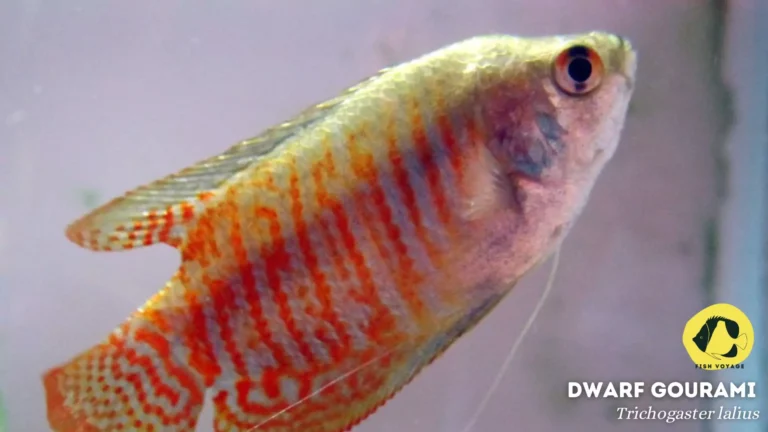
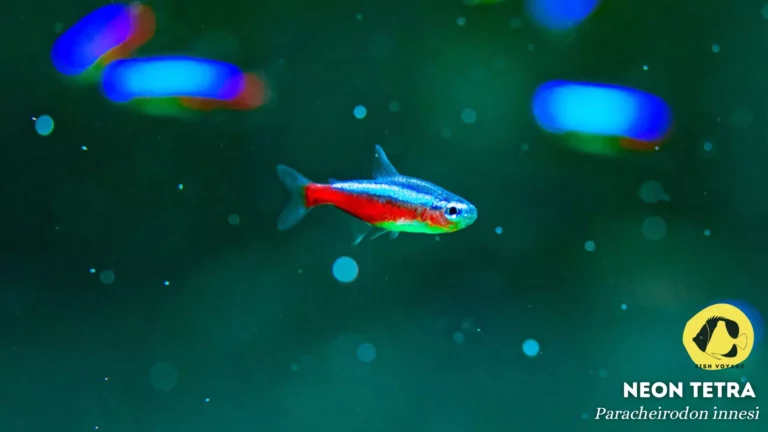
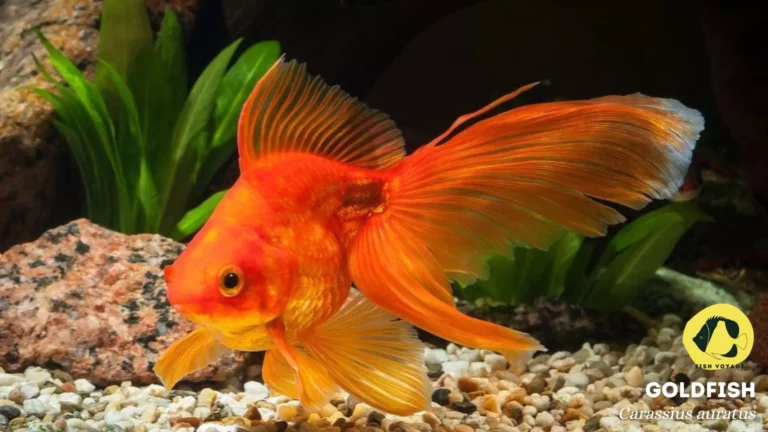
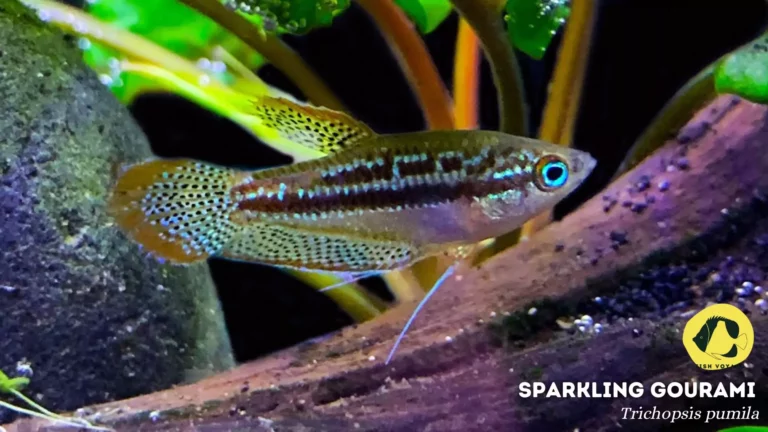


I do not even know how I ended up here, but I thought this post was good.
I don’t know who you are but certainly you’re going to a famous blogger if you are not already 😉 Cheers!
Thank you for your kind words! We’re glad you stumbled upon this post and enjoyed it. Your encouragement means a lot to us. Cheers to you too, and we hope you continue to enjoy the content!